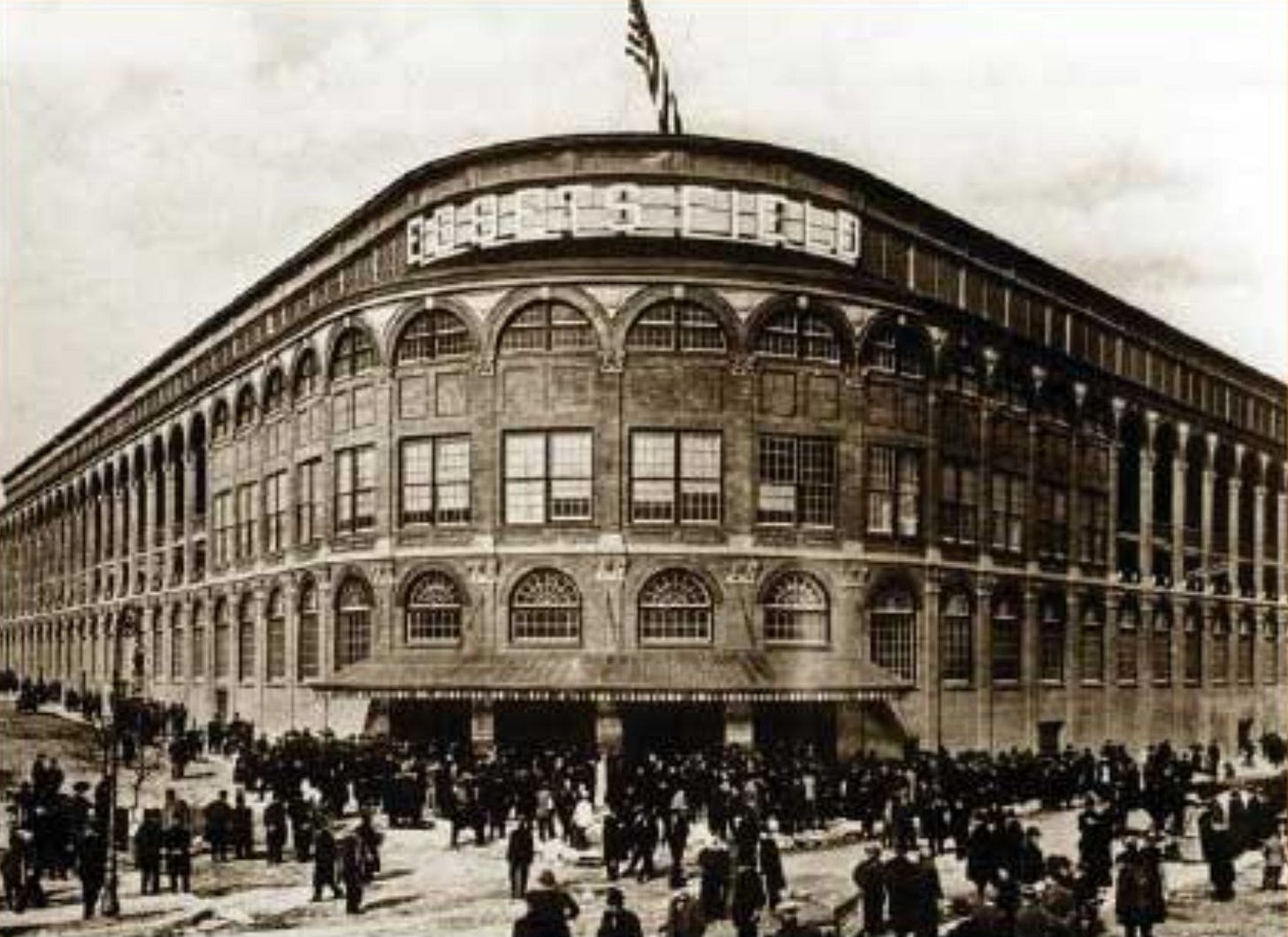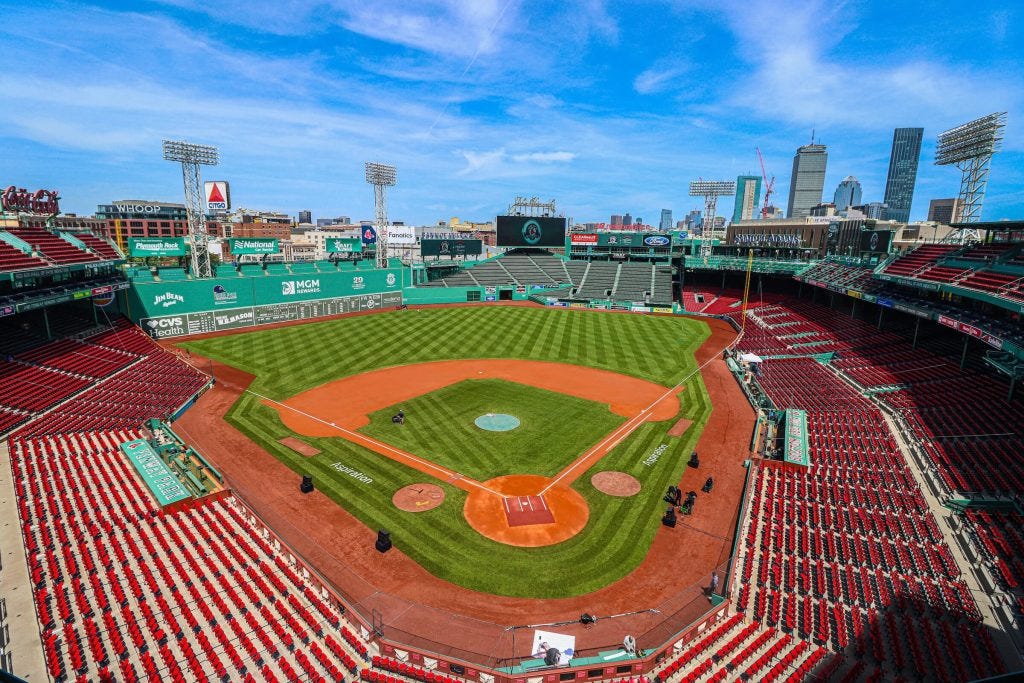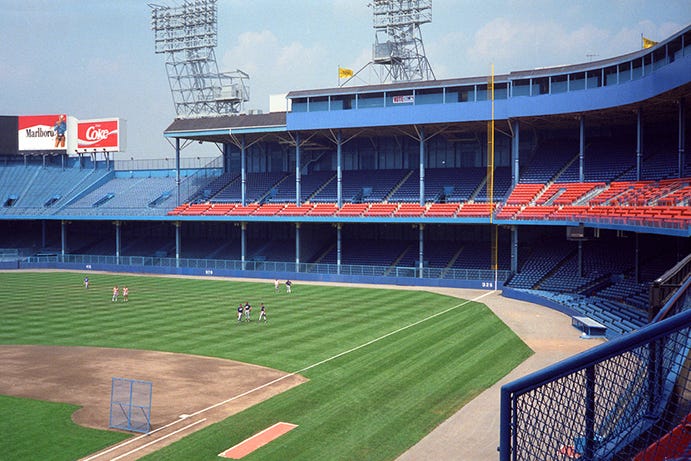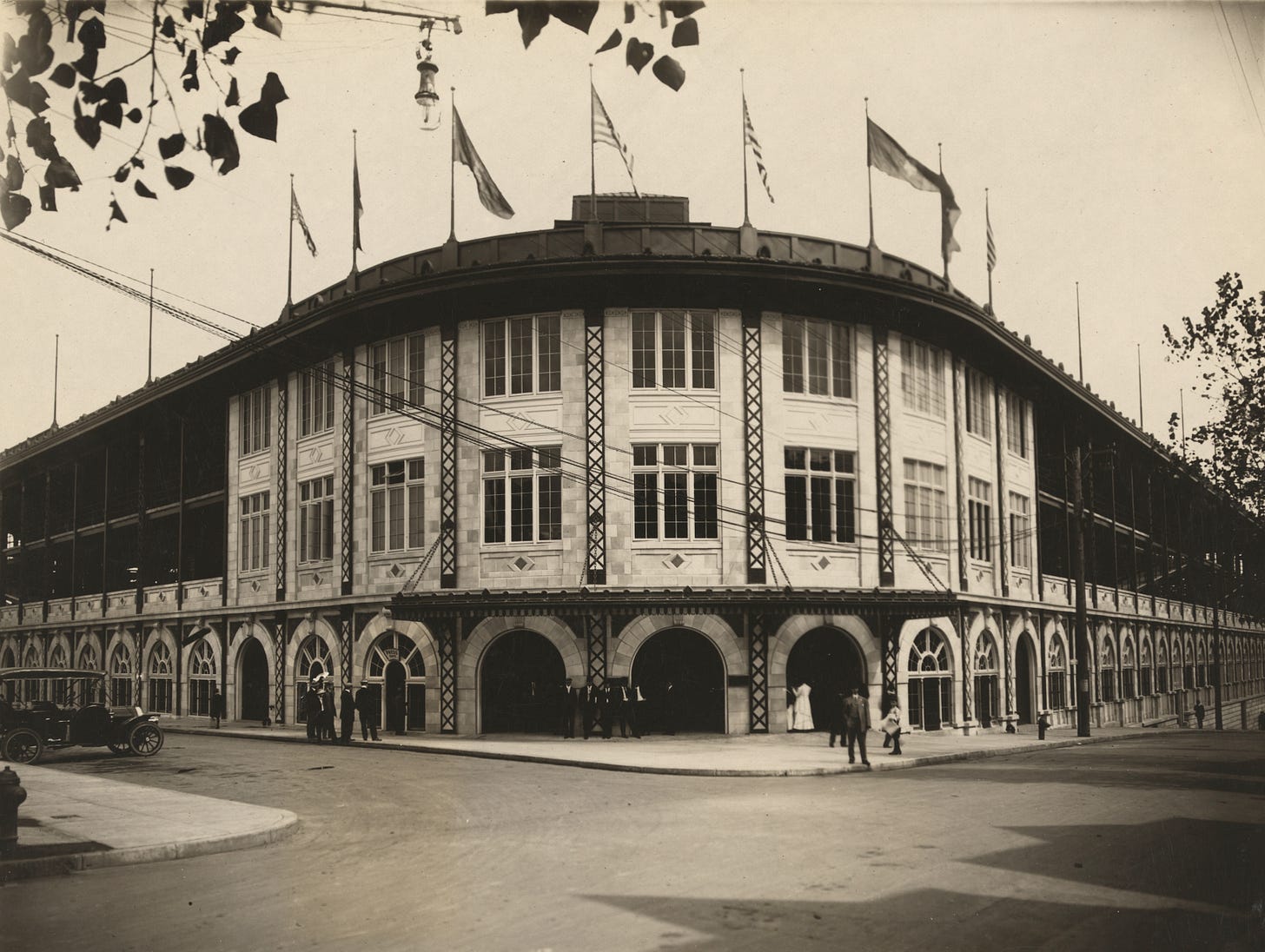On April 19, 1912, two amazing things happened: Fenway Park in Boston and Tiger Stadium in Detroit both opened.
The home teams won both inaugural games. The Boston Red Sox beat the New York Yankees, natch, 7-6 in 11 innings. The Tigers beat the Cleveland Indians 6-5.
Those two ballparks stood the test of time. Fenway is still in use. Tiger Stadium, unfortunately, closed in 1999 — despite repeated attempts to save it.
They are, without question, two of the iconic baseball parks of the last century-plus. Which got me to thinking about what other stadiums fit into that category. Where are the cathedrals of baseball, the places you HAVE to visit if you care about the national pastime?
I need YOU! “The Replay” only works with your support. Please consider investing in what we are building here. It’s just $5 a month or $50 for the entire year!
Below is my list of the most iconic ballparks of the last 100 years. What are yours? And what did I leave out? (Important note: I limited the list to parks built in the 20th century or after. So, the Polo Grounds, which was built in 1890, didn’t make the cut.)
Wrigley Field (Opened 1912)
The ivy. The weird sight lines. The manual scoreboard. The people watching the game from neighboring rooftops. The fact that the park didn’t have lights until 1988 — 40 years after the only remaining team (the Tigers) put lights in. The tortured history of the Cubs franchise (Bartman!). The place just has an aura to it that no other park can match.
Ebbets Field (Opened 1913)
Built on what was once the Pigtown garbage dump, Ebbets Field — named after Brooklyn Dodgers owner Charles Ebbets — rapidly became one of the most-loved ballparks in the country. The players who roamed its expanse are legendary: Jackie Robinson, Duke Snider, Roy Campanella, Gil Hodges. The park became even more beloved when the Dodgers left it —decamping to Los Angeles in 1958. The field was destroyed two years later— and is now an apartment complex. Ugh.
Yankee Stadium (Opened 1923)
The most famous franchise in baseball — and, maybe, in all of sports — played at the original Yankee Stadium for almost 90 years before it was closed in 2008. The history of the place is unmatched — as evidenced by the monument park in center field honoring the greats that played there. (Berra. Mantle. Ruth. DiMaggio. Gehrig. And on and on.) Plus, the original dimensions of the park — 285 feet down the left field line, 460 to left center and 296 down the right field line are the sort of thing you would never see today.
Fenway Park (Opened 1912)
It’s too small. And hard to see the game from plenty of seats. And, well, old. But if you have never seen a game at Fenway — and stared up at the Green Monster in awe (and the Citgo sign in the distance) — you can’t call yourself a real baseball fan. I mean, what other stadium has “the triangle” or “Pesky’s Pole”? Also, not for nothing, Fenway is the oldest ballpark in the MLB. (Also, I ranked Fenway below old Yankee Stadium because I grew up a Yankee fan. So there!)
Tiger Stadium (Opened 1912)
As a kid, I remember watching Cecil Fielder, the slugger for the Tigers, park home run after home run into the 2nd deck in left field at this stadium. I loved those enclosed decks in right and left — and the fact that if you really crushed one, it would land on the roof of the stadium. (Fun fact: The Detroit Lions also played here in the 1950s.) The stadium closed, to much controversy, in 1999. In the final game, which you can read about here, Tiger Robert Fick hit a ball onto the roof for a grand slam. Fitting.
Forbes Field (Opened 1909)
In the early 1900s, the Pittsburgh Pirates played their home games at Exposition Field. Which had a flooding problem. Not good! So, with the help of Andrew Carnegie(!), Pirates owner Barney Dreyfus secured the land and built Forbes Field. It was WAY ahead of its time — it was the first ballpark built exclusively with concrete and steel and featured luxury boxes, which were unheard of at the time. On the field, it was the site of maybe the most famous home run in the history of the game: Bill Mazeroski’s Game 7 dinger in the 1960 World Series that won the title for the Pirates over the Yankees in the bottom of the 9th inning.
Sportsman’s Park (Opened 1902)
Sportsman’s Park did double duty for much of the 20th century — hosting home games for the St. Louis Cardinals (of the National League) and the St. Louis Browns (of the American League). The site on which Sportsman’s Park was built had been hosting baseball — mostly of the amateur variety — since the 1860s. The two most notable elements of the park were its short right field fence (310 feet), which was perfect for Cardinals slugger Stan Musial, and the massive scoreboard in left.
Shibe Park (Opened 1909)
Like Sportsman’s Park, Shibe Park was the home field for two MLB teams: The Philadelphia Athletics and the Philadelphia Phillies. (The Phillies didn’t move their until 1938.) Owner Benjamin Franklin Shibe got the land for cheap because it was adjacent to a smallpox hospital. (The hospital closed down shortly after construction began.) The dimensions of the park are eye-popping: It was 515 feet to dead center.
Camden Yards (Opened 1992)
My youth was spent watching baseball in domes and cavernous astroturfed fields. (The Kansas City Royals had the WORST of those 1980s stadiums.) Camden Yards, built in the early 1990s, was an absolute revelation. It included all of the homeyness and uniqueness of the old-time ballparks with new amenities like great site lines no matter where you stood (even at the concession stands) and boutique food. Every park built since Camden has been influenced by Camden. And, even today, 30+ years after it was built, it is still a GREAT place to watch a game.
PNC Park (Opened 2001)
There is no more beautiful ballpark in the country than PNC. You walk across the Roberto Clemente Bridge to the park, take your seat and the entire city of Pittsburgh is laid out in front of you. The Pirates also did something terrific with the outfield seats — they are pitched so that you feel like you are right on top of the field. Also, in right field, the wall is 21 feet high — a tribute to the late, great Clemente.















The one you should have on the list is San Francisco (Insert Naming Rights Here) Park.
It’s the only MLB park where I prefer to higher up in the stands. The view of the San Francisco Bay is so beautiful and so distracting from the game on the field. The fans in McCovey Cove might are a joy to behold in person.
Great list but no Oracle Park?